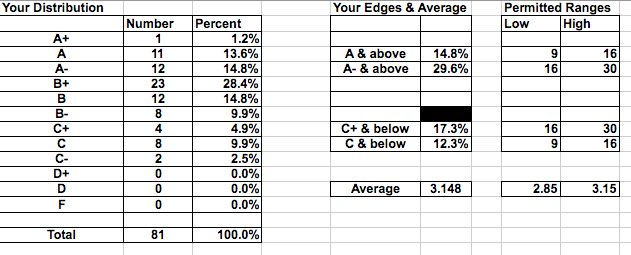Justices Scalia and Ginsburg are the best of friends on the Court. But you would never know it from reading these battling footnotes in McQuiggin v. Perkins.
Ginsburg was not persuaded by Nino’s rant:
3 For eight pages, the dissent stridently insists that federal (although not state) statutes of limitations allow no exceptions not contained in the text. Well, not quite so, the dissent ultimately acknowledges. Post, at 8. Even AEDPA’s statute of limitations, the dissent admits, is subject to equitable tolling. But that is because equitable tolling “can be seen as a reasonable assumption of genuine legislative intent.” Post, at 9. Why is it not an equally reasonable assumption that Congress would want a limitations period to yield when what is at stake is a State’s incarceration of an individual for a crime, it has become clear, no reasonable person would find he committed? For all its bluster, the dissent agrees with the Court on a crucial point: Congress legislates against the backdrop of existing law. Post, at 10. At the time of AEDPA’s enactment, multiple decisions of this Court applied the miscarriage of justice exception to overcome various threshold barriers to relief. See supra, at 7–9. It is hardly “unprecedented,” therefore, to conclude that “Congress intended or could have anticipated [a miscarriage of justice] exception” when it enacted AEDPA. Post, at 10–11.
Scalia responds, not giving an inch:
The Court concedes that “Congress legislates against the backdrop of existing law,” but protests that “[a]t the time of AEDPA’s enactment, multiple decisions of this Court applied the miscarriage of justice exception to overcome various threshold barriers to relief.” Ante, at 14, n. 3. That is right, of course, but only at an uninformative level of generality; the relevant inquiry is, to which barriers had we applied the exception? Whistling past the graveyard, the Court refuses to engage with this question.
For some reason, Justice Alito joined parts I, II, and III of the dissent, but apparently did not join this introductory paragraph?
JUSTICE SCALIA, with whom THE CHIEF JUSTICE and JUSTICE THOMAS join, and with whom JUSTICE ALITO joins as to Parts I, II, and III, dissenting.
The Antiterrorism and Effective Death Penalty Act of 1996 (AEDPA) provides that a “1-year period of limitation shall apply” to a state prisoner’s application for a writ of habeas corpus in federal court. 28 U. S. C. §2244(d)(1). The gaping hole in today’s opinion for the Court is its failure to answer the crucial question upon which all else depends: What is the source of the Court’s power to fashion what it concedes is an “exception” to this clear statutory command? That question is unanswered because there is no answer. This Court has no such power, and not one of the cases cited by the opinion says otherwise. The Constitution vests legislative power only in Congress, which never enacted the exception the Court creates today. That inconvenient truth resolves this case.
Any idea why Alito would not join this part? He agreed with the rest of the blustery dissent.
Update: Ian Milheiser points out that Alito did not join the final three paragraphs after the asterisks (is there a formal name for that)?
* * *
“It would be marvellously inspiring to be able to boast that we have a criminal-justice system in which a claim of ‘actual innocence’ will always be heard, no matter how late it is brought forward, and no matter how much the failure to bring it forward at the proper time is the defendant’s own fault.” Bousley, 523 U. S., at 635 (SCALIA, J., dissenting). I suspect it is this vision of perfect justice through abundant procedure that impels the Court today. Of course, “we do not have such a system, and no society unwilling to devote unlimited resources to repetitive criminal litigation ever could.” Ibid. Until today, a district court could dismiss an untimely petition without delving into the underlying facts. From now on, each time an untimely petitioner claims innocence—and how many prisoners asking to be let out of jail do not?—the district court will be obligated to expend limited judicial resources wading into the murky merits of the petitioner’s innocence claim. The Court notes “that tenable actual-innocence gateway pleas are rare.” Ante, at 2. That discouraging reality, intended as reassurance, is in truth “the condemnation of the procedure which has encouraged frivolous cases.” Brown, 344 U. S., at 537 (Jackson, J., concurring in result).
It has now been 60 years since Brown v. Allen, in which we struck the Faustian bargain that traded the simple elegance of the common-law writ of habeas corpus for federal-court power to probe the substantive merits of state-court convictions. Even after AEDPA’s pass through the Augean stables, no one in a position to observe the functioning of our byzantine federal-habeas system can believe it an efficient device for separating the truly deserving from the multitude of prisoners pressing false claims. “[F]loods of stale, frivolous and repetitious petitions inundate the docket of the lower courts and swell our own. . . . It must prejudice the occasional meritorious applicant to be buried in a flood of worthless ones.” Id., at 536–537.
The “inundation” that Justice Jackson lamented in 1953 “consisted of 541” federal habeas petitions filed by state prisoners. Friendly, Is Innocence Irrelevant? Collateral Attack on Criminal Judgments, 38 U. Chi. L. Rev. 142, 143 (1970). By 1969, that number had grown to 7,359. Ibid. In the year ending on September 30, 2012, 15,929 such petitions were filed. Administrative Office of the United States Courts, Judicial Business of the United States Courts 3 (Sept. 30, 2012) (Table C–2). Today’s decision piles yet more dead weight onto a postconviction habeas system already creaking at its rusted joints. I respectfully dissent.
